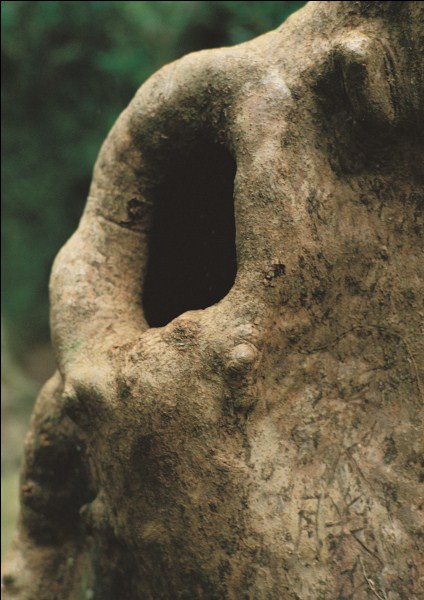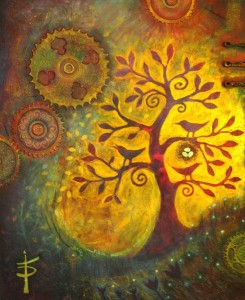Dear Integral Meditators,
First of all wishing you the happiest of new years, and all the very best for 2012! Especially I hope it brings you all a renewed sense of creative participation in the mystery that we call life! This week’s article is on the five stages of the path of the mystic, a mystic being a seeker wishing to connect to life in the truest and deepest source of the word.
 Article of the Week:
Article of the Week:
The Five Stages of the Path of the Mystic
In its broadest sense a mystic is someone who engages sincerely with the mystery of life. He or she is not satisfied to live in a habitual, unconscious and mainstream manner, but rather feels moved to celebrate the wonder of life by investigating it as deeply, consciously and profoundly as s/he can.
It is very easy to forget that our lives are fundamentally a mystery, and become habituated, jaded, cynical and thoughtless about the opportunity we have. I find that one of the best ways to keep in touch with an appreciation of my life is simply to remember that each moment is fundamentally a mystery, and to live each moment and engage in every action mindful of this.
To live the life of a mystic is also to court the path of the unconventional, the unpredictable. As I heard said a couple of weeks ago by a Christian minister; “Mainstream religions love mystics, but only dead ones!” A living mystic cannot be relied upon to tow the line of convention, or do what s/he is told to do by the authorities! One way or another if we are interested in and practicing meditation, we are invoking the path of the mystic into our life.
The paths of the great mystics tend to follow recognizable patterns and stages. These stages have been outlined by scholars such as Evelyn Underhill in her book “Mysticism”, and by mythologists like Joseph Campbell and his idea of the “path of the hero”. The five stages I outline below are basically my own, but they are influenced by these two.
So what are the stages that a person on a mystical path goes through? Here are the five basic stages:
1) A catalytic event, such as a personal tragedy, illness or insight that sets the person off on his or her mystical search for meaning in life. For example the Buddha left the palace of his royal family after seeing a sick person, an old person and a dead person. The sufferings of life became apparent for him then and there and caused him to become immediately motivated to seek enlightenment to relieve the suffering of his people. Another example is Shamans in traditional tribes are often awakened to their path by a bout of physical or mental illness. A third example of such an event might be Saul on the road to Damascus who was blinded by a flash of light for three days. This lead to him turning to God and becoming the man we now know as St.Paul.
2) Initial experiences of illumination
As they embark upon their quest for enlightenment and engage in practices such as meditation, aspiring mystics start to have transcendent experiences that break apart their conventional sense of ego or self and give rise to visions and experiences of “oneness”, radiant lights, visions and so forth. For example I can remember going to two weddings of friends after having taken up meditation in my early twenties, and the entire wedding experience being a completely blissful, out of this world, visionary experience (I don’t think anyone else knew I was having the experience, I think I held it together relatively well!). During this stage we can have a wide variety of these illuminatory, ego transcending experiences. The important point to understand at this stage is that these experiences are a BEGINNING and not an end! If at this point we believe we have become an enlightened being, then in the long term or ego will appropriate these experiences and we will simply become rather deluded and dysfunctional. They are good signs and genuine experiences, but there is much work to be done yet!
3) The “dark night of the soul”
The experiences of stage two where we start to awaken to our real identity or ‘true nature’ then tends to stimulate within us all that is deluded, dysfunctional, hurt, wounded, devious etc…to rise up and “fight back” so to speak. We can interpret this stage as being all that is dark within ourselves rising up to challenge us and our new identity, but I think there is also a sense in which the forces in the world at large that are against our awakening also rise up and try to stop us. This is a difficult and very challenging phase. We may find ourself seemingly isolated, alone, with all our inner demons rising up at the same time. In the story of Buddha’s enlightenment, sitting under the Bodhi Tree the night before his enlightenment he was confronted by the king of demons, the Devaputra Mara, who tried to distract him with visions of attacking monsters and seductive temptresses. Failing to distract him in this way Mara asked the Buddha “If you attain enlightenment, who is going to care anyway?” This is an example more subtle form of discouragement that we can find ourself presented with in our own dark night, a voice in our head saying “No one cares about what you are trying to do anyway, why bother? Just go back to living the way you were!”
4) Stable enlightenment
The process of going through stages two and three repeatedly over a period of time leads finally to a stabilizing of our enlightenment. Enlightenment in this context means aligning our life, experience and intention with the whole, with the universe, with the benevolent mystery of life rather than just with our own ego and self-centered purpose. At this stage our ‘qualifications’ as a mystic are solidified, people could describe us as a mystic and, by and large they would be right!
5) A return to the marketplace
The final stage in the path of the mystic is a returning to ordinary everyday life in order to either teach what we have learned to others in order to awaken them directly, or to live as an awakened example to others of how it is possible to be “in the world but not of the world” so to speak. During this stage we learn how to integrate our ordinary, everyday personality with our enlightened self in an harmonious and thorough-going manner and express ourself in whatever way is most appropriate to benefit others. For one mystic this can take the appearance of a very conventional life, another may be called to lead a very unconventional, even rebellious or eccentric life.
Final comments
So, the above five stages give an outline of the development of the path of the mystic painted in very “broad brushstrokes”. In reality of course these stages unfold in a very organic manner, with stages crossing over each other, coming and going in cycles and so forth. But the basic point is that if you have a “map” of these five stages in your mind, then you can recognize these stages as they are arising and this can really help us see the patterns in the chaos or our own mystical and meditational path!
© Toby Ouvry 2011, you are welcome to use or share this article, but please cite Toby as the source and include reference to his website www.tobyouvry.com

 Article of the Week:
Article of the Week: Article of the Week:
Article of the Week:


